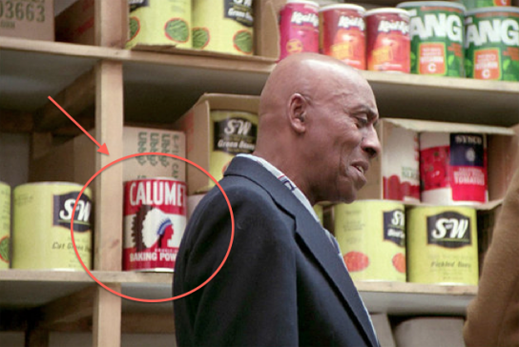Halloween is my favorite holiday, but as has been well-covered on this page and many others, I can't handle gory movies. It's a total bummer. Thankfully, Stanley Kubrick's adaptation of The Shining is more about atmospheric horror than guts and torture, so I don't have to have that glaring blank in my film viewing experience. It's a fun movie to watch, but not the one I'm writing about today. Nope, today is all about Room 237, Rodney Ascher's 2012 documentary about the various theories that Shining obsessives have about the film's underlying meaning.
Kubrick was a meticulous director with an eye for detail, so according to the interview subjects in Room 237, there can be no such thing as an extraneous prop or continuity error. Everything must mean something. Is The Shining about mistreatment of Native Americans by white settlers? Is it about the Holocaust? Is it an extended confession that Kubrick helped fake the moon landing footage? Did he plant a subliminal "Fuck you!" to Stephen King in a traffic scene? Each of the interviewees takes one of these tacks, and holds so tight to their perceived solution to a code that only they have cracked that they can't see anything else. The documentary makes some clever choices in outlining these people's hypotheses.
For one, we never see them. All of the theories are explained in voice-over as we see the relevant scene they're discussing. There are no slick editing cuts; at one point, one of the subjects has to step away from the microphone to talk to a fussy child. And although some of these ideas are laughably cuckoo, the film never goes out of its way to either endorse nor ridicule them. At one point, one of the interviewees insists that Kubrick has photoshopped his own visage into the clouds, and Room 237 merely plays the scene without bothering to point out where this supposed face is meant to appear. Needless to say, it's just clouds. At no point does this film ever point out the outlandish nature of the interviewees' claims explicitly, preferring to just present them as-is.
These people are all interviewed separately, of course, and it's amazing to hear how confident they are as their conflicting theories are put forward. After all, this movie can't be about American Indians and the moon landing, and watching the interviewees cherry-pick "evidence" to support their individual arguments is fascinating. That's not to say that nothing of value is gleaned from the interviews. One subject has done extensive work into the architecture of the Overlook Hotel, and points out that it's actually an impossible structure. There are windows displayed in what should be interior rooms. People turn corners that lead to hallways that should be on another floor. This may have been done to amp up the confusion and tension of the movie's atmosphere, or perhaps it didn't enter into Kubrick's calculus at all. What it probably didn't mean is that we're all trapped in a mythological maze that is symbolized by a ski poster on the wall that may or may not look like a minotaur if you squint at it hard enough.
In many ways, Room 237 could be subtitled Confirmation Bias: The Movie. If all you're looking for are scenes featuring multiples of 7, then that's all you're going to find, even if the most important number in the movie isn't one. By focusing so intently on individual elements of the film, these would-be academics completely miss any sort of big picture. So by not verbally outlining any sort of concrete thesis, Room 237 is actually able to put forth a really interesting one: Consider your source.
Room 237: B+
Subscribe to:
Post Comments (Atom)




0 comments:
Post a Comment